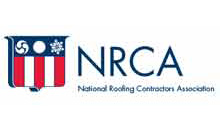When it comes to roofing your home, the integrity of your roof starts way before the shingles are installed. Choosing the right underlayment is crucial for the roof’s durability, longevity and weather performance. In this blog post, we’re diving deep into the differences between synthetic and felt roofing underlayment to help you make the best decision for your home.

What Is a Roof Underlayment?
Roofing underlayment plays a vital role in the protection and longevity of your roof. This layer, installed directly onto your roof deck, acts as a barrier against water and moisture, which can cause significant damage if allowed to penetrate the deeper structures of your home. There are primarily two types of roofing underlayment: felt (often referred to as tar paper) and synthetic, each with its unique benefits and limitations.
Felt Roofing Underlayment: The Traditional Choice
Felt underlayment, made from either organic or fiberglass substrate coated with asphalt, has been the traditional choice for many decades. It’s valued for its affordability and relatively straightforward installation process. However, felt underlayment does have its downsides, including its weight and propensity for tearing over its synthetic counterparts, especially under harsh weather conditions. Furthermore, its performance can degrade over time when exposed to prolonged moisture.
Synthetic Roofing Underlayment: The Modern Upgrade
Synthetic underlayment, a newer innovation in roofing technology, is made from polypropylene, polyester, or fiberglass fabric, offering superior tear resistance and durability. Unlike felt, synthetic materials are lighter, more resistant to UV exposure and water, and can withstand high winds and severe weather conditions better. Choosing synthetic underlayment could mean enhanced protection against the elements.
Which One Should You Choose?
Your choice of underlayment is dependent on your preferences. Felt might have been eclipsed by some of its synthetic counterparts when it comes to flexibility and water resistance, it still remains a viable option if you are looking to keep your roof protected against water damage. It is, after all, readily available and cost-effective.
Quality-wise, however, synthetic underlayment may be the right choice, especially if your chosen roofer recommends it. Its upfront cost can be higher than that of felt, but its composition makes it the best option if you’re looking to ensure your roof remains intact for the long-term.
Remember, the right underlayment, when paired with quality shingles and professional installation, creates a roofing system that can withstand the trials of time and weather. At Balken Roofing, our expert team is committed to providing top-tier roofing solutions that cater to the unique needs of our local community. Whether you’re leaning towards the traditional felt or the modern synthetic underlayment, we’re here to guide you every step of the way in selecting the best roofing options for your home.
To get started, call us at (828) 628-0390, or fill out our contact form to schedule an estimate. We serve homeowners in Hendersonville, NC.






